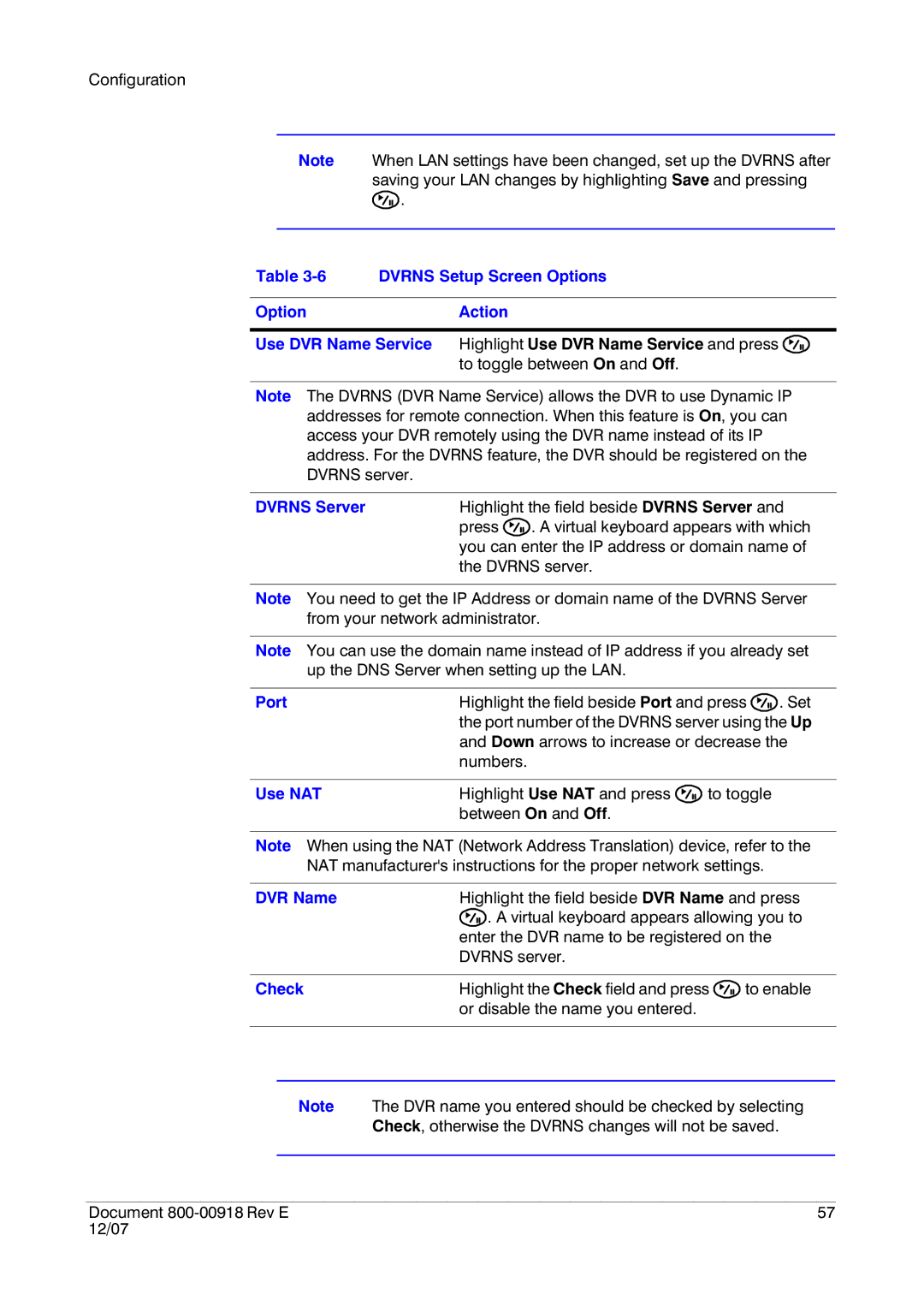
Configuration
Note When LAN settings have been changed, set up the DVRNS after saving your LAN changes by highlighting Save and pressing ![]() .
.
Table 3-6 DVRNS Setup Screen Options
OptionAction
Use DVR Name Service Highlight Use DVR Name Service and press ![]() to toggle between On and Off.
to toggle between On and Off.
Note The DVRNS (DVR Name Service) allows the DVR to use Dynamic IP addresses for remote connection. When this feature is On, you can access your DVR remotely using the DVR name instead of its IP address. For the DVRNS feature, the DVR should be registered on the DVRNS server.
DVRNS Server | Highlight the field beside DVRNS Server and | |
| press | . A virtual keyboard appears with which |
| you can enter the IP address or domain name of | |
| the DVRNS server. | |
Note You need to get the IP Address or domain name of the DVRNS Server from your network administrator.
Note You can use the domain name instead of IP address if you already set up the DNS Server when setting up the LAN.
Port | Highlight the field beside Port and press | . Set | |
| the port number of the DVRNS server using the Up | ||
| and Down arrows to increase or decrease the | ||
| numbers. |
|
|
Use NAT | Highlight Use NAT and press | to toggle |
|
| between On and Off. |
|
|
Note When using the NAT (Network Address Translation) device, refer to the
NAT manufacturer's instructions for the proper network settings.
DVR Name | Highlight the field beside DVR Name and press | |
| . A virtual keyboard appears allowing you to | |
| enter the DVR name to be registered on the | |
| DVRNS server. |
|
Check | Highlight the Check field and press | to enable |
| or disable the name you entered. |
|
Note The DVR name you entered should be checked by selecting
Check, otherwise the DVRNS changes will not be saved.
Document | 57 |
12/07 |
|
